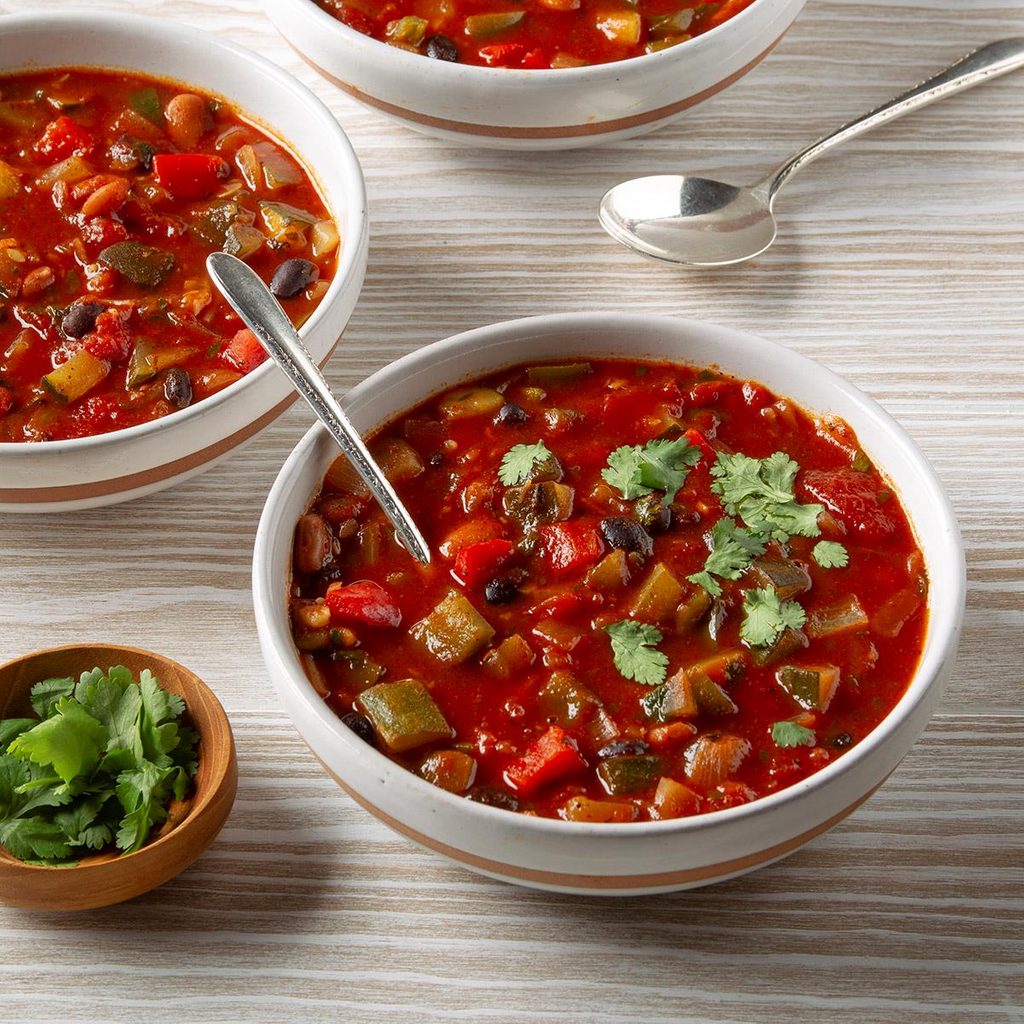Vegetarian Chili Tips
Can I use fresh and frozen vegetables in this recipe?
You can certainly start with a bag of frozen mixed pepper and onion, however, you'll want to saute the frozen vegetables for about 5 minutes longer than you would fresh. This extra cook time allows the vegetables to thaw and the flavor to develop. Learn more about the
food you should always buy frozen.
What add-ons can you put in vegetarian chili?
There are many ways you can make this recipe your own. Try incorporating spices like smoked paprika into the mix or add grains like quinoa and rice. Extra vegetables like squash or kale would work well, too. If you're looking for a thicker chili, you can add in one of our
favorite chili thickening ingredients like a cup of beans,
masa harina, or tortilla chips. Too thick? You can thin your chili by adding water or tomato sauce. The more liquid you add, the thinner the chili will become.
How do I serve vegetarian chili?
While this chili recipe is fine on its own, consider ladling it over a bed of quinoa, noodles, zoodles or couscous. We also recommend adding a few toppings like a dollop of sour cream, avocado slices, shredded cheddar cheese and extra cilantro.
How long does vegetarian chili last in the fridge?
Vegetarian chili lasts up to 4 days in the fridge. If you want to enjoy it for longer, you can freeze vegetarian chili, too. It can last in the freezer between 4-6 months in a
freezer container.
Peppers (Hot)
Wear disposable gloves when cutting hot peppers; the oils can burn skin. Avoid touching your face.
Nutrition Facts
1 cup: 131 calories, 4g fat (0 saturated fat), 0 cholesterol, 622mg sodium, 18g carbohydrate (0 sugars, 6g fiber), 5g protein. Diabetic Exchanges: 1 starch, 1 vegetable, 1 fat.




















